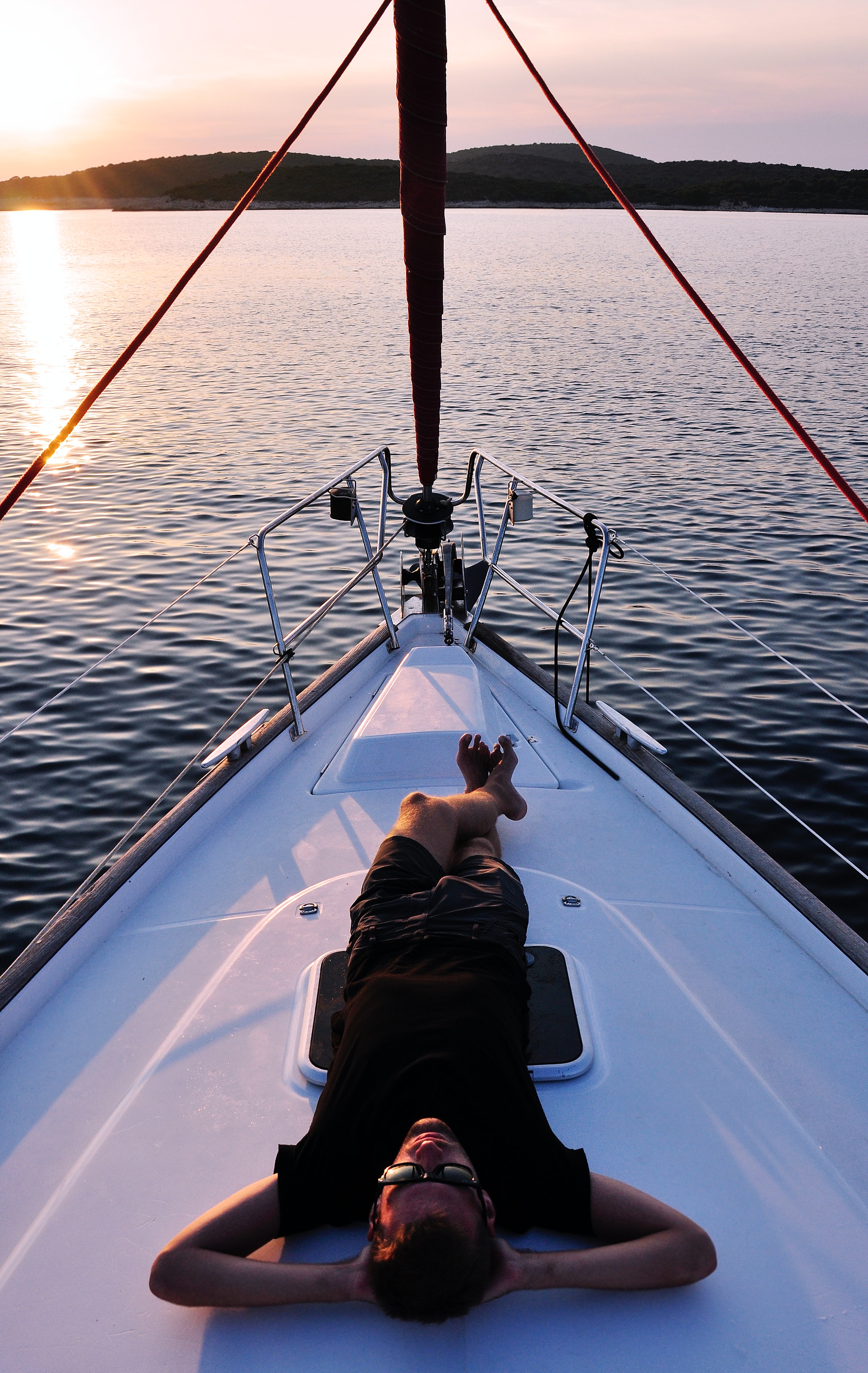Larry Weidel: I am here with my good friend Matteo Perrin who has developed his own brand in the luxury lifestyle arena.
Matteo knows how to create whatever you want, and the reason people work with him is the quality of his products.
He grew up with three generations of artisans in northern Italy, and he knows all of the people who manufacture luxury items for the big name-brand luxury houses—Hermès, Gucci, Louis Vuitton, etc.
Matteo’s pieces are customized, however, and he has found a niche of people who want to be unique, express their own style, and who have worked hard enough to afford that level of specialization and high quality.
Matteo Perin: Thank you, Larry. I’m from Verona, Italy, one hour inland from Milano, right between Milano and Venice below the Alps. I grew up here in a very small town. I’m a lifestyle designer. I design things to go with your lifestyle.
In the process, we create a better lifestyle for the person and what they want to do, how they want to do it, and how they want to enjoy life. I’m lucky enough to be able to express my point of view in design with the customer in mind.
[Personal Note: Matteo came through town yesterday, and I introduced him at Mar-A-Lago. They immediately were so excited about him and his products that they scheduled him for two trunk shows there next winter. For the people who can afford it, his products are magic.]
LW: If people want to see your products, they should contact you through your website at MatteoPerin.com, or they could go to one of your trunk shows.
What are some of the products you have designed for your clients? What have been some of the high points for you in your career? Tell us how you got started and how you became so well known.
MP: When people say lifestyle, they want to create a better experience for their family and while traveling. Coming from a small town in Italy, I never had the luxury to go on one of those private jets.
This one client had a couple of private jets and asked me to check the planes, measure the space, and create items for each traveler—blankets pillows, pajamas—things that match the plane interior, but also match the personality of the person traveling.
They wanted all the travel items to match so when they got off a plane in Paris, London, Moscow, or Singapore, they wouldn’t look sloppy. All the bags had a certain feel. That was one of the first big projects I was very excited about because it was new, and I had to deal with different personalities.
LW: It’s having your own personal designer like people have their own personal chefs, landscape architects, and interior designers.
Matteo works with top-level actors, musicians, business CEOs, people who want to go beyond the basics, want the extras, and want to make a statement with their lives and flourish beyond just existing.
How did you get into that world? How and where did you start? When in your life did the idea of doing something like this occur to you?
MP: It started when I was young. My grandmother had a very close friend in Rome, Angelo, who was a master tailor.
He was in his early 80s and still making clothes. I remember spending a lot of time at his apartment when I was young. I would see pictures of famous people like Humphrey Bogart, Carey Grant, and some of the Italian politicians. He had made a lot of suits for these people back in Italy’s Dolce Vita era.
He was actually the one that helped point me and my future to where it is now because I used to wish I would become like him, a tailor, someone that could actually make things with his own hands.
I remember when I was 12, he had asked me what I wanted to do, and I told him that I wanted to be like him. He replied, “No, don’t do that.”
I was very upset. But after a few minutes, he explained. He said, “Listen, since you were six, you hang out with me at my tailoring shop, and all you do is draw. So why the hell do you want to make stuff?”
And I said, “Well, because it’s beautiful.” And he said, “Listen, you can always find people like me, but finding people like you who have ideas and who can draw from scratch from nothing—that is harder.”
So this actually opened my mind more. That was one of the things that got me started, and I realized, that I could create a design from an idea, and then find someone who could make it.
When I was 14, I had finished school here in Italy, and I decided that I wanted to experience something different. I felt that Italy was not going to give me what I needed and wanted.
I was able to go and stay with a family friend in Los Angeles for a little while. I started painting blue jeans on Hollywood Boulevard. That was something that probably couldn’t happen now. But back then, it was quite fun for a 14-year-old, for me, to leave a small village of 7,000 people.
LW: Your head obviously started spinning once your friend, the master tailor in Rome, put that in your head. I guess you were starting to work on options of how you could make that happen fast?
MP: Yes. As a young kid, I liked to draw and paint. It was fun for me to paint on clothes because it was something that I would wear.
I realized, especially in Los Angeles—it was very interesting because that’s one thing that I love about the Americans, the culture—people ask when they see something they like. Italians would probably look at you and think, “wow, that’s so cool,” but never ask.
Instead, Americans will ask, “Wow, where did you get your jeans? Where’s your jean jacket from? Where’s your shirt from?” So I would say, “Oh, I painted it.” And that’s how I actually was able to start.
LW: What kind of plans did you make as a kid to make this launch? How long did you plan to do it? Was it an impulse thing?
MP: I’d say it was quite impulsive because I started going to school here in Italy that I didn’t like. My parents wanted me to be an accountant, have a good job, be stable, that kind of stuff. So I went there for one and a half weeks, and then I left.
LW: You hit the ground running in LA. Did you have a plan for painting jeans on the sidewalk when you got there? Or did you say, “I’m going to get there and figure it out.”? The age of 14 is not even an age that you can get a job.
MP: I did not have a plan. I liked basketball, so I figured I would just come there, go play basketball, and maybe become a big star.
After the first week, I went to a playground, and this kid that was smaller than me dunked on my head. I realized that was it. I was like, okay, I’m not growing much more probably so I guess I can forget about basketball as a career. I still enjoy playing as a hobby.
I started wandering around and enjoying the city. After a week, people started asking me where I got my jeans. I would tell them that I made them. It was difficult for me to understand the Los Angeles accent so I would write it down in a little book.
LW: So eventually, this turned into a business for yourself.
MP: When the first people asked if I could paint something, I asked for $5 because I knew I could go and get McDonald’s and get a bus ticket back to the house. Then people started asking me to do a few more. I guess people appreciated it and started giving me $10 and said, “Okay, keep the change.” Eventually, it became $20 and more.
LW: So how long were you doing that?
MP: I did that for about a year. I started doing more from home if they were more complicated.
LW: What caused you to make such a bold move?
[bctt tweet=”It’s one thing to have a thought, an idea. It’s another thing to act on it.” username=”LarryWeidel”]
In addition, you had to learn with a language barrier. When did you get the idea that you could go back to Italy and do it on a bigger scale?
MP: The idea of going back to Italy took a lot longer. For a long time, I was just enjoying it. I was a kid, and I just enjoyed painting, and I realized I could make some money doing it.
At times I moved around the US to different cities. I had the mind of an adventurer. I wanted to go see Portland, for example, and I would go there and paint some stuff and then move on.
LW: And you’re picking up the language as you went, right?
MP: Yes. After three months I was able to answer people when they asked me a question.
LW: So now you’re moving around, getting away from your comfort zone of staying with a friend. You must’ve made some pretty decent money and been confident. Entrepreneurs have that adventurous spirit.
Many times entrepreneurs cannot explain why they do something, but the better you get at recognizing the reasons behind the actions, the better. Did you have the idea of exploring when you moved to the US?
MP: I thought LA would be my thing because of basketball, the Lakers, and movies. But honestly, in the beginning, a lot of my moving was due to girls. I would meet a girl, and if she was from another city, then I might go check out Chicago, for example.
I’ve always been a very outdoorsy guy. I would travel with my parents and see the country. I liked the idea of going to see different places for inspiration.
I remember the time when I had to go to Montana and saw all these fields with cows and different colors. Then I made a pair of leather pants that were in different color leathers that reminded me of the cows. It’s silly, I guess, but that’s what designing is.
LW: Every great idea might seem dumb in the beginning, to somebody anyway, but you can’t find out until you do it.
That’s another key—your parents gave you exposure to different things growing up. You were inspired at an early age by your environment, art, and people creating. You’re always drawing. You found something that you had a natural talent for, and you did it all the time.
People wonder, “What should I do with my life?”
What do you wake up in the morning and think about? What do you find yourself doing? If there’s a magazine rack of all kinds of different magazines, which magazines do you pick up?
You have to sort through the things that interest you.
One of the greatest gifts you can give kids is exposure to many different things, and support them when they’re ready to take a big step.
LW: Parents can either hold them back or encourage them. Encourage them!
MP: I was lucky enough that my parents understood me. I felt like I was ready. If they had stopped me, I would have probably run away and did it anyway.
It took them a few months. I wanted to leave in September of ’97, and I didn’t leave until January 3, 1998. So it took my parents a little while. They wanted to figure out where I could stay and with whom. That way, they felt they had some control to ensure that I wasn’t going to live on the street.
LW: At some point, you’ve got to launch, you have to find out for yourself, see with your own eyes, and come to your own conclusions.
Reality is the greatest teacher. You can’t talk people into things, but you can get them into a situation where they can try, and then let reality send them a lesson to see whether or not it’s possible.
Thank you for sharing behind the scenes what it’s like to launch something absolutely unique.





